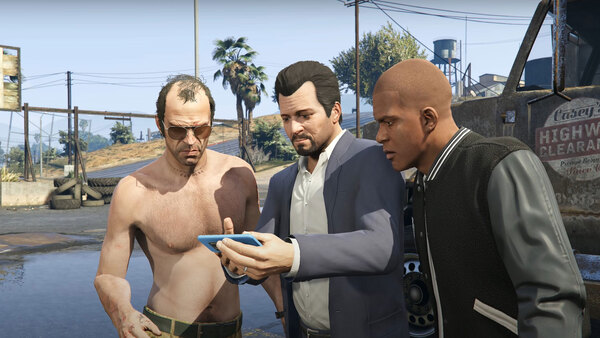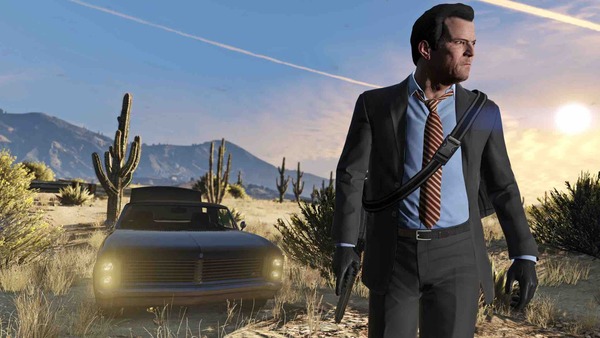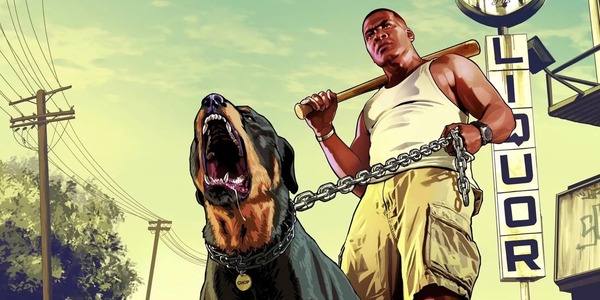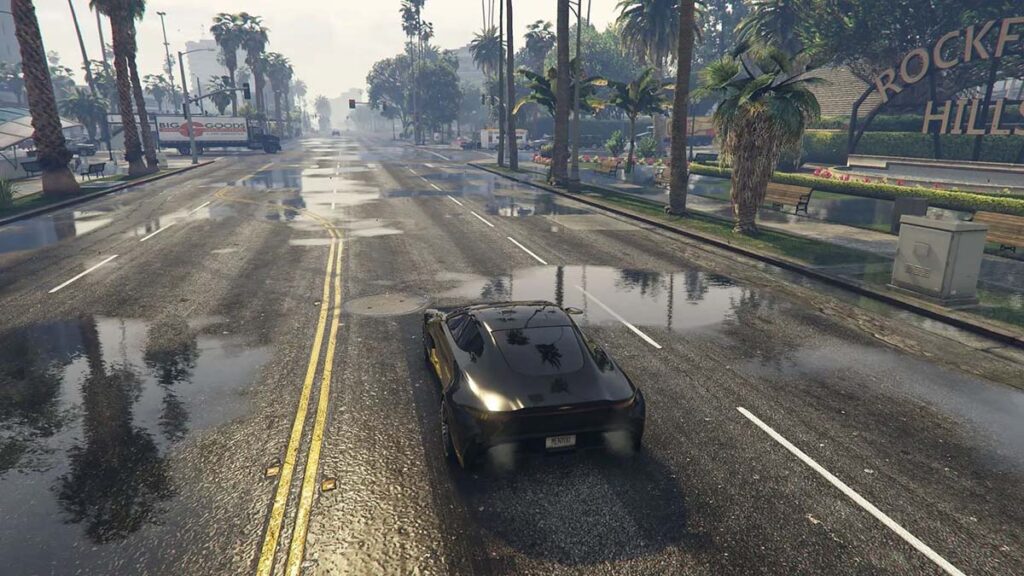Since its release in 2013, Grand Theft Auto V (GTA V) has become one of the most iconic open-world games in history. While its vast sandbox world, memorable characters, and satirical storytelling have earned it critical acclaim, one gameplay element stands out for its complexity, creativity, and narrative significance: the heist missions.
These cinematic, multi-layered robberies are the heart of GTA V’s single-player mode and a defining feature that sets it apart from predecessors and peers. In this deep dive, we’ll explore the intricate world of GTA V’s heists—examining their structure, planning, gameplay, character dynamics, and storytelling integration. Each heist feels like orchestrating a blockbuster film, where success hinges on strategy, choice, and execution.
The Genesis of a Crime: Introducing Heists
Heists in GTA V are large-scale missions that involve planning and executing major robberies. They are multi-part, cinematic sequences that require not just brute force but careful forethought. The very first significant heist—The Jewel Store Job—introduces the mechanics that define these missions: choosing an approach, hiring a crew, scouting the location, and collecting gear.
This early mission also debuts the planning board, where players make pivotal decisions. For instance, you can opt for a stealthy infiltration or go in loud with guns blazing. Each path impacts the mission’s structure and outcome, showing players early on that their choices have meaningful consequences.
Preparation is Everything: Planning and Setup
Before the Bullet Fires
Unlike standard missions, heists demand thorough preparation. The planning stage makes you feel like a true criminal strategist, with tasks involving surveillance, resource acquisition, and logistical setups that mimic real-life heist planning.
The Setup Missions

Setup missions are essential prerequisites for executing a heist. These include stealing getaway vehicles, collecting disguises, or acquiring hacking equipment. Their successful completion often determines how smooth—or chaotic—the final robbery will be.
Setup examples include:
-
Acquiring a getaway car and parking it discreetly.
-
Stealing or buying high-tech gear like gas canisters or jammers.
-
Performing reconnaissance on guards and security patterns.
These missions vary in intensity and style, offering a taste of every gameplay mechanic GTA V has to offer.
The Crew You Choose: Character Dynamics and Roles
Recruitment and Specialization
Crew selection adds another strategic layer to heists. Each NPC specialist—gunman, driver, hacker—has a skill level and demands a cut of the final payout. A more skilled hacker may extract more money before alarms trigger, while a cheaper option might botch the job entirely.
This system encourages calculated risk. Hiring a less skilled but cheaper crew member can maximize profit, but at a cost of reliability.
Michael, Franklin, and Trevor
The game’s three protagonists each bring unique skills to the table. Michael excels in shooting, Franklin in driving, and Trevor in piloting and aggression. Switching between them mid-heist isn’t just a gimmick—it’s vital to mission success. Each perspective adds flavor and functionality to the robbery.
The Jewel Store Job: The Blueprint
The Jewel Store Job is the player’s first real heist experience and sets the standard for those that follow. You can choose a “smart” approach using knockout gas and stealth or a “loud” one with brute force.
The setup missions differ depending on your approach: for example, stealing a gas truck and disguises for the stealth route. Crew performance affects the amount of loot stolen, emphasizing planning and execution.
This mission lays out the formula: plan, prep, perform. It’s elegant, rewarding, and sets the stage for even more elaborate capers.
The Merryweather Heist: A Cautionary Tale
The Merryweather Heist deviates from the norm—it doesn’t yield money but drives the story forward. Trevor initiates this mission out of recklessness, pulling Michael and Franklin into a dangerous operation involving a high-tech government weapon.
The mission involves stealth infiltrations, cargo hijacking, and underwater exploration. It’s one of the few heists where the payoff is purely narrative. It also introduces tension among the trio, especially between Michael and Trevor, as their motivations start to conflict.
This heist reminds players that not all operations are about profit; some are about power and control.
The Paleto Score: Maximum Mayhem
Big Guns, Big Trouble
The Paleto Score is chaos incarnate. Armed with military-grade miniguns and armor, the crew robs a small-town bank and fights its way through waves of police and military forces. This mission pushes the game’s action mechanics to the limit.

Notable Highlights
-
Use of heavy weaponry for overwhelming firepower
-
A linear escape route through a forested area
-
Epic shootouts involving tanks and helicopters
It’s a spectacle of destruction and a perfect representation of the “loud” heist path taken to the extreme.
The Bureau Raid: Infiltrating the System
Unlike cash-focused heists, The Bureau Raid feels like a Hollywood spy thriller. There are two approaches: a covert infiltration disguised as janitors or a more explosive rooftop breach.
Both paths offer different setup missions and dramatically different gameplay. In the stealth approach, players sneak through FIB headquarters, plant explosives, and escape unseen. In the aggressive path, it’s a full-blown shootout.
This heist deepens Michael’s ties with corrupt government agents and places the trio at the center of a web of lies and federal schemes.
The Big One: Union Depository Heist

The Grand Finale
The Union Depository Heist is the most lucrative and ambitious job in the game. Players can choose between an “Obvious” approach involving armored cars or a “Subtle” one requiring insider assistance.
Both paths demand multiple setup missions, including intercepting security vans, acquiring uniforms, and forging credentials.
Endgame Stakes
Everything the player has learned culminates in this job. Crew loyalty, previous performance, and strategic decisions all come into play. The mission’s success depends heavily on the player’s mastery of the game’s mechanics and the foresight used throughout earlier heists.
Failure and Fallout: When Things Go Wrong
GTA V’s heist system isn’t foolproof—failure has real consequences. Crew members can die and will not return for future jobs. A clumsy gunman might drop loot, slashing your take-home earnings.
Mistakes in setup missions can make the final heist harder. For instance, a misidentified getaway location might put you in a high-police-traffic area, increasing your chances of being caught.
This system rewards careful planning and encourages players to replay heists to improve performance or try alternative outcomes.

Legacy of the Heists: Online and Beyond
Evolution into GTA Online
In 2015, Rockstar expanded the heist model into GTA Online, allowing multiplayer crews to coordinate and execute high-stakes missions. These online heists require real teamwork and communication, bringing a new level of challenge and excitement.
Influence on the Industry
The success of GTA V’s heists has rippled across the gaming industry. Games like Red Dead Redemption 2, Payday 2, and Cyberpunk 2077 have adopted similar multi-phase mission structures. Rockstar’s blend of storytelling and player agency has become the gold standard in mission design.
Conclusion
GTA V’s heist missions are a masterclass in mission structure and narrative integration. They’re not just thrilling set-pieces—they are meaningful, strategic, and immersive experiences that reward both smart decisions and skilled gameplay. From planning to execution, every step feels impactful. These missions redefined what open-world games could be, and their legacy lives on in both single-player storytelling and multiplayer innovation.


